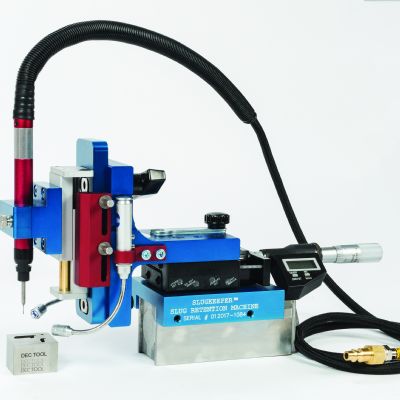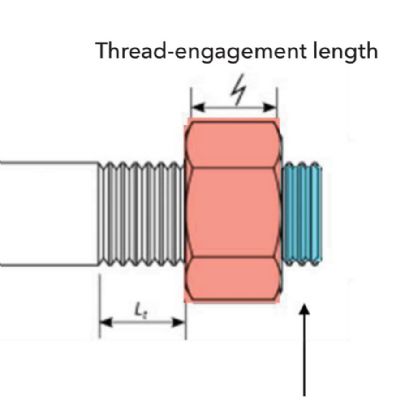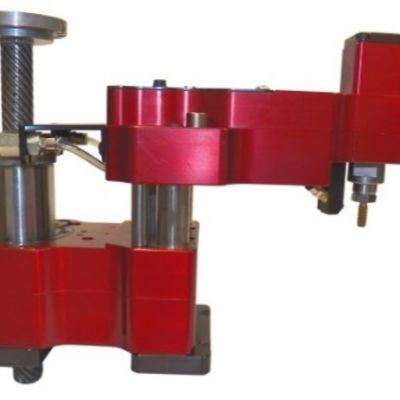Advances in Metal-Stamping Technology
October 1, 2016Comments
Technologies in metal stamping continue to advance and mature—as they always have done—but today this happens more rapidly than in the past and the technologies are profoundly more complex.
Hot forming is a good example. Today it is common practice to form some automotive components from boron steel sheetmetal at high temperatures (approximately 900 C) in a die that simultaneously forms and quenches the stamping—essentially heattreating the formed part in the die.
Hot forming is very different from a traditional deep-drawing process. No blankholder is used; instead, special clamping units are installed to hold the part material in position and to prevent the formation of wrinkles. Cooling lines often are required in close proximity to the die surface to facilitate the quenching process, which makes the use of special die steels with high heat-transfer rates and high strength necessary. Strong ejector systems also must be designed and built to facilitate part removal. These are only a few of the critical features that must be addressed when designing and building hot-forming dies. Hot forming is an amazing accomplishment considering the fact that most die engineers and tool and die makers were never trained in this technology.
Advancements in steel technology have led to a new class of high-tensile-strength materials referred to as advanced high-strength steel (AHSS). With the exception of the boron-based hot-forming grades, these materials are designed to be cold-formed in traditional stamping dies and press lines at room temperature. These materials can have two to three times the tensile strength of traditional high-strength low-alloy (HSLA) steels, placing unprecedented demands on new tooling and older press lines.
A third generation of AHSS materials—currently under development—have tensile strengths equivalent to some hot-formed stampings but with enough ductility to be cold-formed at room temperature. These ultra-high-tensile-strength materials surely will push existing press lines beyond the capacity limits for which they were designed.Steel is not the only material changing the way that metal stampers operate. In the last decade, aluminum alloys have experienced a significant increase in use for sheetmetal-part applications in automotive and other transportation industries.
Processing aluminum stampings can be challenging, especially when working with new or unfamiliar alloys. New alloys are being developed for ultra-high strength hot-forming applications; other existing alloys are being successfully warm-formed and a few others can be super-plastically deformed. More common alloys are being refined to provide better cold forming properties. Understanding the differences and limitations between the various aluminum alloys and their tempers is essential in order to provide the process engineer and die designer with the best opportunity for success.
Advances in forming lubricants, lubricant application methods and lubricant thickness-measurement technologies are becoming increasingly more important and prevalent; especially considering the arrival of third-generation AHSS materials and the elimination of chlorinated paraffin in the near future.
Modern stamping dies are subjected to an ever increasing array of stresses, temperatures, chemical attack, shock and vibrations. So, it is not surprising that metal-stamping dies are prone to all a kinds of in-process failures. Tooling chemistry, heattreating methods and engineered surface coatings are constantly improving to meet the increasing demands placed on today’s stamping dies.
Carbide materials often are chosen for metal-stamping operations when long production runs are required. They exhibit high compressive strength, resist deflection and retain their hardness values at high temperatures, a physical property especially useful in high-speed cutting, punching and forming applications. Some processes, such as perforating small-diameter holes in hard, tough materials, may only be possible with tungsten-carbide punches.
Brand new metalforming-process developments such as double-sided incremental sheetmetal forming are emerging. This novel manufacturing process utilizes two generic tools to manipulate sheetmetal in an effort to produce free-form parts without the need for dies. The process can potentially achieve a cycle time of design to product within a few hours or days as compared to a typical period of weeks or months required for conventional sheetmetal-forming processes.
The digital world also is working hard to keep pace with advancing stamping technology by delivering more accurate sheetmetal-formability analysis; improving springback prediction and responding to variations in the stamping process; simulating programmable servo-press slides in combination with programmable servo-driven transfer systems to optimize strokes per minute; optical scanning technology (white light and/or blue light scanners) to capture and digitize dies and parts produced off dies in order to assess and appropriately modify the tooling; and morphing solutions that enable rapid and repeatable development of compensated die surfaces, to name a few.
So how can metal stampers and tool and die shops keep pace? Plan to attend PMA’s Metal Stamping Technology and Tool & Die Conference in Chicago on December 6-7, 2016. Also, consider joining me at some of the many stamping technical tracks being offered at FABTECH, November 16-18, 2016. Receive a 30-percent discount on your FABTECH stamping-track sessions using the discount code SPK30.
Visit www.fabtechexpo.com/education for more information. MF
View Glossary of Metalforming Terms
Technologies: Tooling









